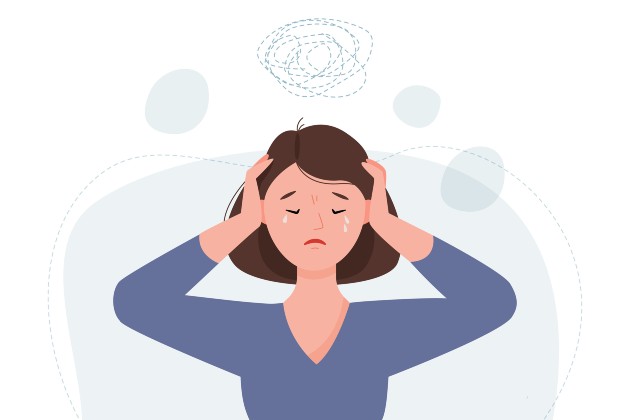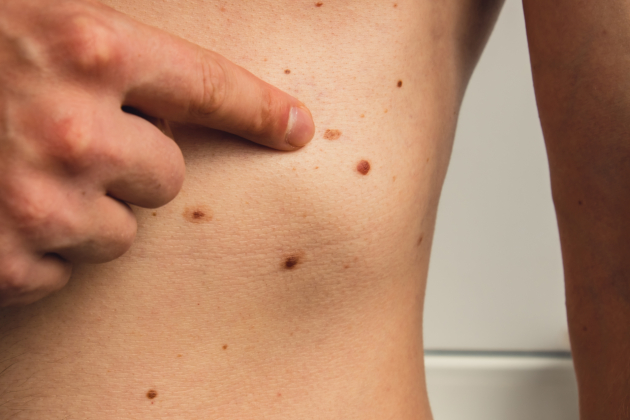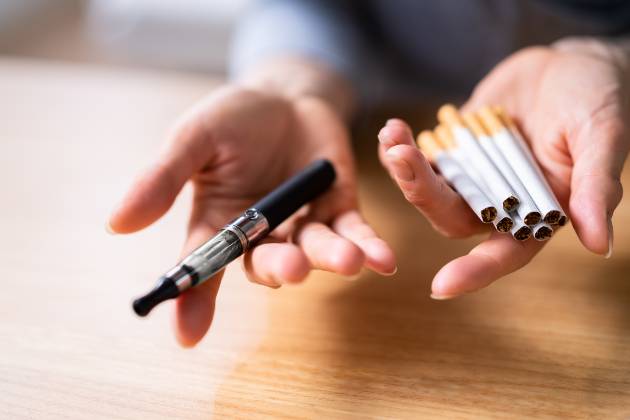For at least a week every month, specialist mental health nurse Aimee feels like a different person. Sometimes she feels a deep paranoia, or a sense of despair, like something catastrophic is happening.
Other times, she feels anxious and scared, and wants to be completely alone. Then there’s trouble sleeping, with jolts of fear when she wakes, plus headaches and changes in appetite. At its worst, Aimee feels an acute depression and even suicidal thoughts.
Aimee has premenstrual dysphoric disorder (PMDD) – a complex hormone-based mood disorder that manifests as a severe form of premenstrual syndrome (PMS), with extreme mood changes, anxiety, sleep disturbance and physical symptoms that start in the luteal phase, 1–2 weeks before a person gets their period.
PMDD is a chronic condition that is frequently under-recognised and under-diagnosed.
Knowing what’s normal
“As a teenager, I wasn’t really sure what was normal for a menstrual cycle, or PMS, I was just told about the bleeding, and then you just sort of get on with it,” says Aimee. “I was also overweight from the age of 23 and my periods weren’t always regular, but I was never taught to tune in and track my monthly cycle.”
After a weight loss surgery in 2019, Aimee’s periods became more regular and with that she began to experience what she now knows were the first symptoms of PMDD, aged 31.
I was asking myself: have I always felt this bad and just not realised?
“I received a late diagnosis of ADHD when I was 33. With changes to my understanding of self and the use of medication, my ADHD symptoms were soon under control, but these other symptoms were still occurring every single month. I was asking myself: have I always felt this bad and just not realised?
“I started looking into PMDD online and found a cycle tracker.”
After 3 months of filling in the tracker, Aimee could see a pattern. “There were 7–10 days each month where I felt totally incapable,” she says. “The more I learned, the more I realised I wasn’t being dramatic or oversensitive, I was unwell.”
Aimee contacted the PMDD Collective – a group of mental health professionals – and began therapy.
I felt validated for the first time
She also presented her findings to her GP. “There I was armed with my trackers and my hours of research, fully ready to be told: ‘Yes, we all have PMS, it’s just life!’, but instead I saw my brilliant GP who specialises in women’s health. I felt validated for the first time,” she says.
“Once you’re over the stigma, there’s a freedom in knowing that even though most months are as difficult as the last, there is a reason and it will pass.”
Treatment options
Treatment for PMDD can include a combination of lifestyle changes, talking therapies, complementary therapies, selective serotonin reuptake inhibitors (SSRIs) or hormone treatment to suppress ovulation. For Aimee, it’s been a case of trying different treatments to work out what suits her.
“A big step forward was communicating about my condition with my employer,” she explains. “I’ve always been open, and I realise it’s easier said than done, but it was incredibly well received by my line manager.”
Aimee’s manager made reasonable adjustments which account for her luteal phase. This includes not seeing brand new patients during this time: “Instead, I do follow-ups with people who know me.”
This window is also marked in her calendars at work and at home so her colleagues and family members are aware she might not be feeling well on these days.
“I also do what work I can from home so if I need a cry or a nap I can do that in safety of my own space,” she adds. “I realise these adjustments wouldn’t be suitable for every role, but it’s helped me a lot.”
Recognising symptoms
Does Aimee have any advice for those who recognise the symptoms in themselves? “Download a tracker,” Aimee says. “Give yourself permission to reflect every day for 2-3 months and look at the trend. Take it to your GP. Tell them: I’ve read about this condition and I think it might apply to me.”
A combination of psychological support and treatment has helped Aimee manage the condition, but it’s not always easy. “All of this doesn’t make it go away, of course, but being on a treatment plan that includes vitamins, diet, and exercise certainly does help.”
Personal care plan
Aimee has created a care plan for herself, looking at adjustments related to people, places and substances.
Substances
“Less caffeine means less anxiety, and alcohol is best avoided as it affects me differently at this time.”
People
During the luteal phase: “I have a handful of go-to people who I can be totally honest with and make me feel better. I avoid certain people and in-depth discussions during this time as I may not be the truest version of myself, and can feel completely drained and exhausted by the end of the conversation.”
Places
“Places that are busy and unfamiliar can make me feel overwhelmed,” Aimee says. “I aim for positive places – my bed, or my cosy little corner table with my notepad, escapism TV, art and candles.” She also spends time with her horse: “He doesn’t expect anything from me, he just accepts me as I am, as long as I come with carrots and a cuddle.”
Informing practice
A positive, Aimee says, is that having PMDD has hugely informed her nursing practice. “With my patients I’m more inclined to ask questions and consider symptoms. All nursing staff need to be aware and incorporate it into our thinking,” she says.
“We often ask about appetites, sleep habits and so on. We need to include periods and PMS symptoms. If someone you’re caring for is saying that PMS symptoms are so severe they feel like a different person, we need to think: could it be PMDD?”
Employers too, need to be aware. “With PMDD what we’d be looking for is compassion and reasonable adjustments at a specific time in a person’s cycle,” Aimee says.
If we don't talk about it, lives will be lost
There’s an urgency here – the condition can lead to profound mental suffering and 34% of people with PMDD have attempted suicide, according to the International Association for Premenstrual Disorders.
“If we don’t talk about it, lives will be lost,” Aimee says. “When my PMDD has been bad, I’ve never experienced a darkness and fear like it. But if you can work towards a diagnosis and understanding, there is help and support out there. We can find a way through the darkest times.”
Further information
- PMS and PMDD film.
- What are PMS and PMDD: read the RCN publication.
- National Association for Premenstrual Syndromes.
- Promoting menstrual wellbeing: visit the RCN's clinical guide.
- RCN Member Support Services including counselling services.
- PMDD Collective.
The NHS says If you need urgent advice you can:
• call a GP and ask for an emergency appointment
• call 111 out of hours (they will help you find the support and help you need)
• call a helpline, such as the Samaritans (call free on 116 123).
If you feel that you may be about to harm yourself, call 999 for an ambulance or go straight to A&E.








